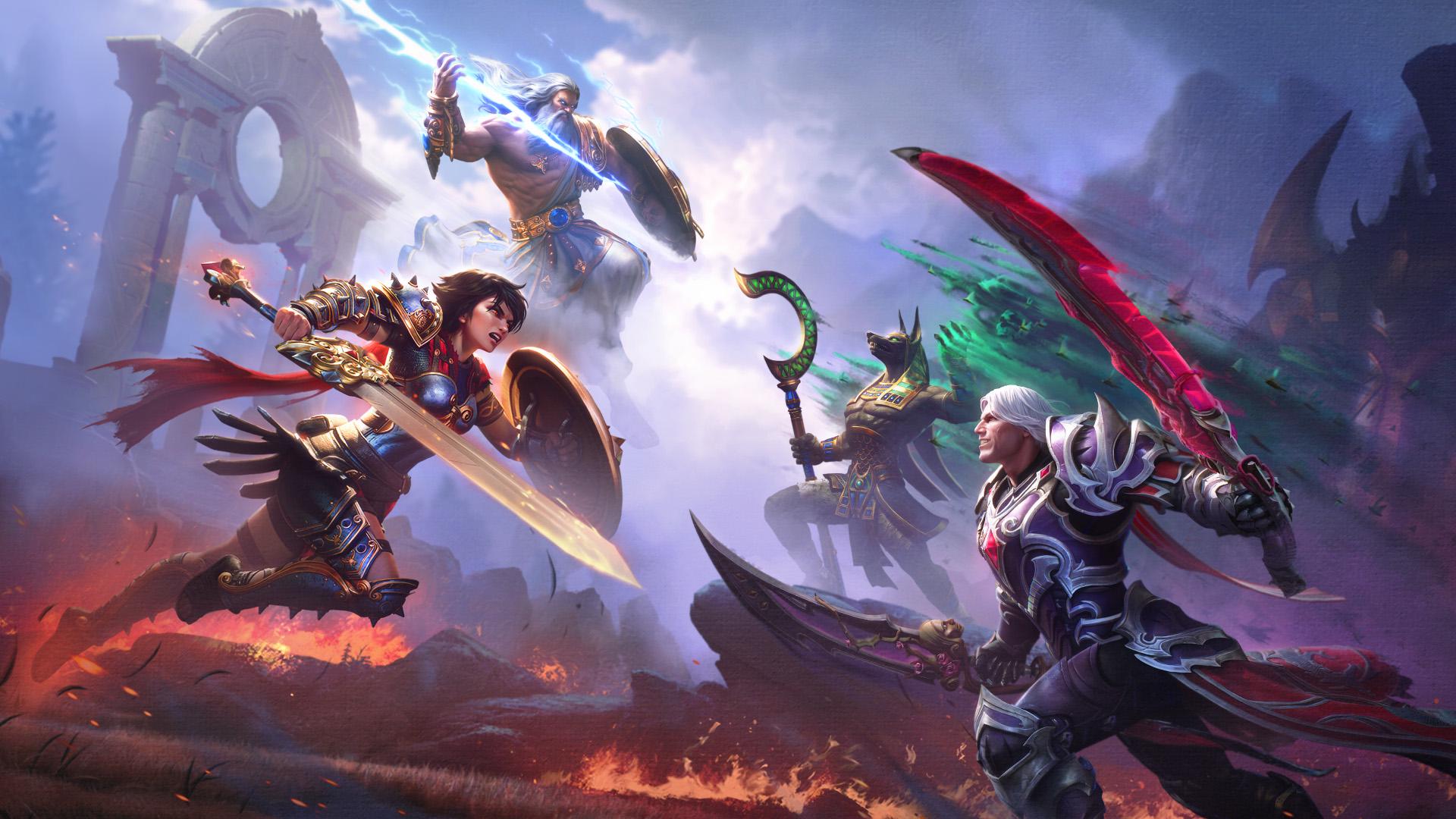
What's that sound I hear in the distance? Is it chanting? The rhythm of a drumming circle? A chorus of gaming mouse clicks at 180 beats per minute? This can only mean one thing—MOBAs have returned.
It's feeling very 2014 on Steam this week. Valve's launched a new MOBA, Deadlock, while Hi-Rez, the studio behind the eternally-third-place-to-Dota-and-LoL-but-still-beloved Smite, is back with its own sequel after a decade. Smite 2 is live on Steam as of today in a $30 founder's edition, which the developers are calling a "24/7 closed alpha." Anyone can play Smite 2 as long as they kick in some cash, and at some point down the road it will become free-to-play like its predecessor.
Hi-Rez has kept the original Smite running for quite a long time, first launching it in beta in 2013. While many free-to-play games like Smite are simply updated so many times over the years they eventually prompt a ship of Theseus debate, in a recent interview at Gamescom executive producer Alex Cantatore told us that the original gods vs. gods MOBA had reached a "technological tether" that was holding it back.
"Smite 1 was built on Unreal Engine 3, and the engine was starting to show its age. There were lots of little janky bits about Smite 1 that we were unable to address without investing tremendous engineering into. It was a better decision to just move to a modern platform."
One big, obvious problem was that Unreal Engine 3 doesn't natively support the current generation consoles, PlayStation 5 and Xbox Series X|S, and Smite's playerbase is larger on consoles than PC. The studio looked into bridging that gap themselves, but starting over on Unreal Engine 5 clearly became the better option given the other limitations of their old engine.
"Our community was commenting more and more on the HUD, so we went on this project to upgrade the HUD in Smite 1. We put a pretty big team on it and they worked on it for about a year, and the finished product, despite their hard work, kind of sucked. The UI in Smite 1 is built upon Flash, which was standard in 2014; the UI runs at a different framerate than the game, it doesn't feel as smooth, and if you want to do any animation it's in an old, slow program that isn't really around anymore. Doing anything takes 10 times as long. That's just one of the hundreds of little examples that were holding us back and slowing us down."
So: Sequel time! Cantatore called the move to Unreal Engine 5 about "building a stronger technical foundation for the next decade of Smite." The game looking better is really a bonus alongside the huge boon to development efficiency. When they had to rework Smite 2's HUD (apparently a hard thing to get right!) it took a week and a half. A rework of Smite 2's environment to make it look more stylized and less "default UE5" was a response to player feedback, and it took just six weeks to put together. That new art pass debuted with today's 24/7 alpha. Cantatore estimated it would've taken a year to do in Unreal Engine 3.
"The velocity we're able to move at it is so much better. The technical underlyings are so much better," he said. "We know we have a long way to go before Smite 2 is truly a great game—it's still a closed alpha—but we feel like we're so much better prepared to be a top MOBA that can live for another decade."







